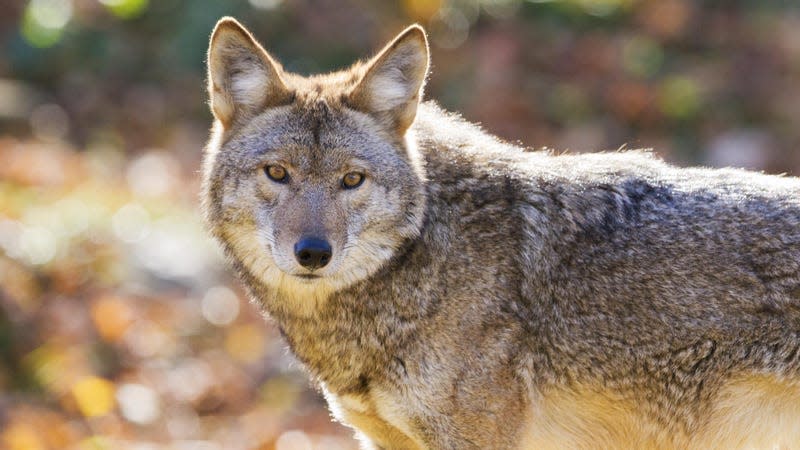A Decade-Old Coyote Attack Mystery May Be Solved

In 2009, a pack of coyotes living in Canada’s Cape Breton Highlands National Park killed a 19-year-old hiker in a seemingly unprovoked attack. It was the first coyote-related killing ever documented in Canada and only the second in North America, following the 1981 death of a toddler in California. More than a decade later, scientists now believe that they have figured out exactly why the tragedy occurred. They argue that the park’s coyotes had started hunting large animals like moose due to their limited resources, which then made them more likely to go after humans. They ruled out other possible causes, such as the coyotes becoming more familiar with humans or their food over time.
The death of singer-songwriter Taylor Mitchell in late October 2009 shocked many, including coyote experts. Despite public perception, coyotes aren’t known to be aggressive toward humans. Even in urban areas shared by the two species, the animals will often avoid human contact.
Read more
A team of scientists in Canada and the U.S. have been studying the possible circumstances behind Mitchell’s death. Their investigation has included the capture of nearly two dozen coyotes in the area between 2011 and 2013, which allowed the team to outfit them with devices to track their movements. They also collected whisker samples from the coyotes (including the animals implicated in Mitchell’s death) and fur samples from potential prey in the area, as well as hair samples from a local barbershop. By studying the nitrogen and carbon contents of these samples, the team was able to estimate the recent diet of the coyotes, including whether they had eaten food meant for humans.
Coyotes generally hunt or scavenge small prey, though they’re omnivores that can eat most anything if the opportunity is there. But the team found that the Cape Breton coyotes were mostly eating moose, with the large animal accounting for half to two-thirds of their diets on average, followed by small mammals and deer. The same pattern was true for the coyotes responsible for Mitchell’s death. And unlike coyotes elsewhere, there was little seasonal variation in their diets, suggesting they were primarily hunting moose throughout the year.
The switch to large prey seen in this coyote population would likely only happen out of sheer necessity, the authors argue, and it’s this unique adaptation that predisposed them to attacking Mitchell.
“We’re describing these animals expanding their niche to basically rely on moose. And we’re also taking a step forward and saying it’s not just scavenging that they were doing, but they were actually killing moose when they could. It’s hard for them to do that, but because they had very little if anything else to eat, that was their prey,” said lead author Stan Gehrt, a wildlife ecologist at OSU, in a statement from the university. “And that leads to conflicts with people that you wouldn’t normally see.”
Gehrt and his team also collected evidence that points away from other common theories for the attack. The coyotes in the park had an expansive range, but they still tended to avoid areas that overlapped with human activity. They also moved more often at night during periods of the year when humans were most active in the daytime. And only a handful of the coyotes had recently eaten human food (including one of the coyotes involved in attacks on humans), further reducing the possibility that these animals are spending much time near us. Lastly, hunting and trapping isn’t allowed in the park, meaning that local coyotes may not fear humans as much as they typically do elsewhere.
“It’s a big area for these coyotes to live in and never have a negative experience with a human—if they have any experience at all,” Gehrt said. “That also leads to the logical assumption that we’re making, which is that it’s not hard for these animals to test to see whether or not people are a potential prey item.”
All in all, the findings, published last month in the Journal of Applied Ecology, suggest that what happened to Taylor Mitchell was a tragic but “quite rare” occurrence, the study authors say. The conditions that led to her death are especially unlikely to happen in places where coyotes have plenty of food and natural prey to eat, including urban areas shared with humans. At the same time, people visiting the park or other areas with similar environmental conditions “should be made aware of the risks coyotes pose and encouraged to take precautions,” they wrote, such as bringing along a partner and animal deterrents like bear spray. Park managers in these areas may also need to carefully monitor coyote behavior and be willing to take action earlier than usual, which could include the culling of aggressive coyotes.
Though there have been reports of coyote attacks in the park in the years since, no other deaths appear to have occurred.
More from Gizmodo
Sign up for Gizmodo's Newsletter. For the latest news, Facebook, Twitter and Instagram.

